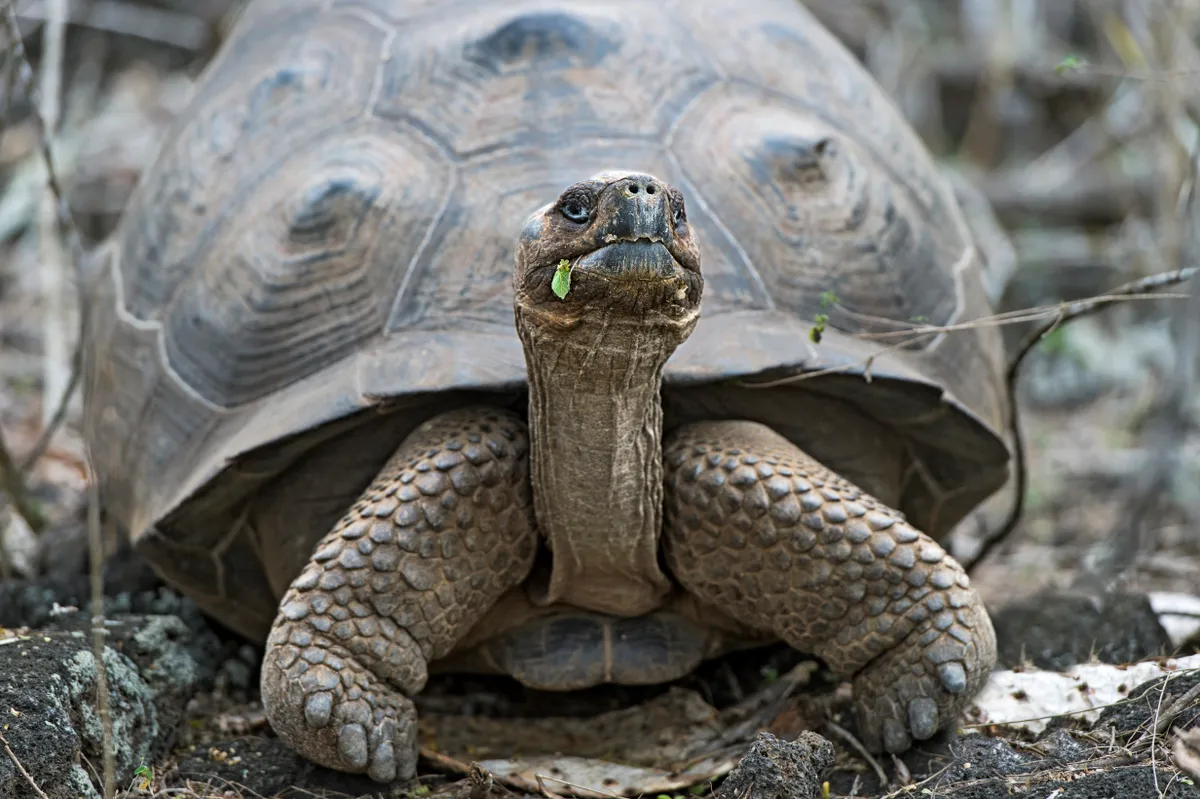Animals come in a range of sizes. The smallest are from a group called Myxozoa, jellyfish-like parasites about one-hundredth of a millimetre long that are only visible under a microscope. Among vertebrates you would recognise with the naked eye, the smallest known to man is Paedophryne amauensis, a tiny frog that is just 8mm long.
How large can animals grow?
The heaviest beasts to ever walk the Earth were long-necked sauropod dinosaurs, known as titanosaurs. With a mass of about 50,000kg, titanosaurs weighed the same as 10 elephants and yet were still three times lighter than the largest species of all time, the blue whale, at 150 tonnes. Aquatic mammals often have a mass-to-volume ratio that matches the density of water, which provides neutral buoyancy and supports weights that can’t be reached on land due to size limits.
What limits total body size?
Some biological features, such as heart size, can scale roughly in proportion to body size – known as an isometric relationship.
But many characteristics can’t scale with size, and these ‘allometric’ traits are not fit for purpose past a certain point. One example is bone, which eventually breaks under the force of gravity. Allometry (meaning ‘different measure’) applies not only to morphology (shape) but also to physiology, so that an animal’s metabolism scales to its total size.
Why is scaling such a challenge?
Consider respiration, which involves absorbing oxygen from air and releasing carbon dioxide. Those gases are exchanged through diffusion across the surface of every cell, which is challenging because the volume of any three-dimensional object grows faster than its surface area. So in order to overcome that ‘square-cube law’ and meet the energy demands of cells, a 10-fold increase in body size would require a 1,000-fold (103 ) rise in the surface area used for gas exchange.
Is that why some types of animals are always small?
Yes. The respiratory surfaces of mammals and birds have been folded into lungs, fish have gills, and oxygen/carbon dioxide is transported to and from cells via blood vessels of a dedicated circulatory system.
By contrast, many invertebrates have a respiratory system of branching tubes (trachea) that bring air into contact with the blood that bathes cells. Without true circulation, it takes too long for gas exchange in a big body, which is why insects are rarely larger than a few centimetres.
What influences animal size?
Habitat plays a part, as shown by how species evolve after colonising islands. Typically, small-bodied animals become giants – think of the giant tortoises of the Galápagos or Seychelles – whereas large-bodied animals become dwarves, as illustrated by the now-extinct pygmy elephants of Sicily and Greece.
That trend towards either gigantism or dwarfism is the ‘island rule’: animals may encounter fewer predators or less competition from other species, releasing small animals from ecological pressures to allow gigantism, or restricting resources so that big animals eat less to resist starvation, leading to dwarfism.
According to a recent study comparing 2,479 mainland to insular (island-dwelling) terrestrial vertebrates, the island-rule phenomenon is especially strong among mammals and reptiles, where body mass is influenced by an island’s area and also its isolation.

Do species have a perfect size?
Maybe. The comparison between mainland and island terrestrial vertebrates also found that cold-blooded species seem to converge on an optimal mass of 20g. For warm-blooded species, it’s 100-250g. That optimum varies with climate: for mammals, it’s 100g in warm regions and 900g in cold, which supports the hypothesis that animals evolve to conserve heat.
And while buoyancy and an unrestricted habitat should allow aquatic mammals to keep growing, allometric traits such as body temperature and metabolic rate seem to impose limits on size: of the four groups that independently evolved to live in water, only otters remained small, whereas seals, sea cows and cetaceans seem to have an optimal mass of 500kg.
Main image: Blue whale swims alongside a diver. © Getty
